





Serving in the military can be demanding and dangerous. It can also be rewarding. But what comes after you have completed your service?
The transition from military to civilian life can be difficult. In a 2019 survey, the Pew Research Center found that roughly one in four veterans said reentry into civilian life was either difficult or extremely difficult.
"Transitioning military veterans typically have the option to either find a job or go back to school to pursue higher education," says Gary Blau, professor of human resource management at the Fox School.
Blau and Glen Miller, adjunct instructor of human resource management at the Fox School, investigate the role of higher education and how it can lead to a more successful transition to civilian life in their new research.
Their article, "Education as a Pathway to Help Job Searching Military Veterans' Transition to Civilian Life," was published in the Journal of Education and Development.

"Glen and I wanted to explore the data on burnout recorded in veterans," Blau explains. "We were intrigued by the idea that burning out could promote active job search and eventually lead to veterans wanting to further their education."
A 2019 Pew Research Center study found that only a quarter of veterans had civilian jobs lined up after they left the military, and only 16% felt that the military prepared veterans for their transition.
"Military veterans who had a civilian job lined up after the military were more likely to be burned out and more likely to search for new jobs, as a way out," says Blau.
In their research, Blau and Miller looked at both combat and noncombat veterans enrolled at Temple University in 2019. Across both samples, they found that those actively job-hunting more likely experienced exhaustion and burnout when compared to veterans who were not actively searching for a job.
There was also evidence that combat veterans who were actively job-searching were more likely to be going to school to further their education versus combat veterans who were not actively searching. In the sample, high percentages of both combat veterans (71%) and noncombat veterans (81%) indicated going back to school.
Veterans, particularly noncombat veterans, who went back to school, according to Blau and Miller, felt that they had a higher level of occupational alternatives. However, an important prerequisite was having the financial resources to go back to school.
Other research has shown that veterans who prioritized education after leaving the military had more positive correlations with increased job search activity, self-reported happiness and selfrated health.
Blau and Miller ask another question in their follow-up article: Did military veterans tend to gravitate more toward intrinsically motivated majors—doing a task for its inherent satisfaction—or majors that are more extrinsically motivated—doing a task to achieve external rewards?
They used three small data samples of Temple University Chapter 31 veterans enrolled in 2016, 2018 and 2020.
"Chapter 31 veterans have suffered some disability and receive assistance in the form of tuition and other educational benefits when transitioning to civilian life," explains Blau. "We wanted to know: Was there a higher percentage of Chapter 31 veterans that picked intrinsically motivated majors?"
Their study found that these veterans were indeed more likely to pursue majors, like human resource management, public health and social work, that led to intrinsically motivated careers versus majors that promised higher salaries or external rewards.
This conclusion does not surprise Miller, a retired combat military veteran who has over 50 years of experience working with combat veterans. Blau credits the hypothesis for their study on Miller's experienced-backed hunch.
"Veterans appreciate the notion of service to others. So we wanted to know: Is intrinsically rewarding work more fulfilling? Is the gravitational pull toward service stronger than going off to a job somewhere like on Wall Street?" questions Miller.
Miller continues, "For veterans, trying to do well by the society they live in is so important. Service to the community is a way of retaining the integrity instilled by their military service that is so hard to find in corporate America."
With little prior research, Blau and Miller's studies offer unique insights into veterans' education and career pathways after leaving the service. Their research on veterans' majors, to the authors' knowledge, is the first of its kind that compares intrinsic versus extrinsic majors of Chapter 31 veterans.
Unfortunately, Miller believes that there aren't enough resources to help every veteran make an easy transition to civilian life.
He says, "A lot of jobs are required by the government to meaningfully employ more veterans not only demand experience, but also essential skills like leadership and teamwork."
But anecdotal evidence from employers and veterans suggests that employers fail to understand the significance of military work history, and that this causes skill gaps. In 2019, the Department of Labor challenged organizations to create a jobmatching software tool to help transitioning service members find meaningful work after their service to their country.
Miller says, "Right now there is a tremendous need for kindred spirits. We need to support those who were willing to risk their lives to save others. We need to help transitioning veterans, to give them the support they need because initial research supports that they are the ones who are more likely to choose majors and professions that involve helping people and being on the frontlines."















As ideas, technologies and capabilities converge, industries are constantly being reimagined. The pandemic and its far-reaching effects exacerbated existing trends, upended others and created entirely new possibilities for the future of the business world altogether.

The world turns and we evolve with it. To investigate how leaders have had to reimagine the future of their business and industry, we spoke to alumni and Fox School community members leading the charge in real estate, healthcare and retail.
A throughline in these conversations was, despite the isolation that has characterized our present, our future will not be defined by Zoom meetings or working, living and learning solely at home. Leaders across the business community underscore the importance of revitalizing and reimagining physical spaces and using them as essential hubs to rally around.
In an article for the Philadelphia Business Journal in early 2021, Jerry Sweeney, president, CEO and trustee of Brandywine Realty Trust, said, "I think everybody who's in our business should be incredibly enthusiastic about what could happen in 2021."
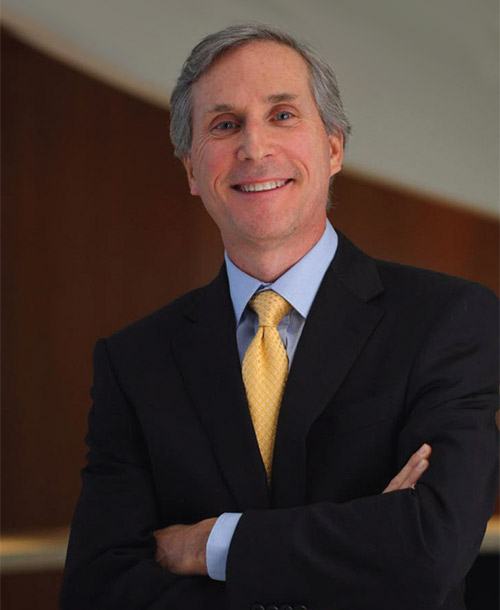
Jerry Sweeney
"Business leaders are more discerning than ever when It comes to the health, well-being and overall workplace Experience for their employees."
Looking back on the year, Sweeney, a Board of Visitors member of the Fox School of Business and 2016 Musser Award winner, believes that the real estate industry held true to that prediction.
"Philadelphia's rapidly growing life science ecosystem has continued to set record pace of real estate demand," says Sweeney. "Here, we are seeing an extraordinary amount of life science companies that see the value of having superior access to talent and world-class healthcare and academic institutions."
 In the last year, Brandywine broke ground on 3025 JFK "The West Tower," a mixed-use project within the Schuylkill Yards neighborhood featuring office, life science and residential spaces. They also opened B.Labs, a life science incubator space at Cira Centre, now fully leased. They are nearing completion on 250 Radnor, within the Radnor Life Sciences Center, a transit-oriented campus offering lab, research and office spaces designed to help amplify human health, wellness and productivity. Brandywine will be starting on at least one new life science tower in 2022.
In the last year, Brandywine broke ground on 3025 JFK "The West Tower," a mixed-use project within the Schuylkill Yards neighborhood featuring office, life science and residential spaces. They also opened B.Labs, a life science incubator space at Cira Centre, now fully leased. They are nearing completion on 250 Radnor, within the Radnor Life Sciences Center, a transit-oriented campus offering lab, research and office spaces designed to help amplify human health, wellness and productivity. Brandywine will be starting on at least one new life science tower in 2022.
In addition to these new spaces, Sweeney and Brandywine are committed to providing greater access to transportation and opportunity for small and minority-owned businesses in 2022 and beyond. "As developers, we step into our role as true master planners, creating interconnected spaces that serve the community through wider streets, multimodal transit options, alfresco dining and activated greenspaces—all designed to enhance quality of life."
Real estate professionals make these investments because they understand the social, environmental, health and economic benefits that physical spaces offer to communities like those in the city of Philadelphia.
 "2021 was also a year that further underscored the value of physical space and the importance of human connection," says Sweeney. "Business leaders are understanding that organizational productivity, employee culture and sense of community have suffered because of the remote work experiment spurred by the pandemic. Companies are shifting their focus to providing high-quality workspaces for their employees where people can come together, collaborate and rally around a shared mission."
"2021 was also a year that further underscored the value of physical space and the importance of human connection," says Sweeney. "Business leaders are understanding that organizational productivity, employee culture and sense of community have suffered because of the remote work experiment spurred by the pandemic. Companies are shifting their focus to providing high-quality workspaces for their employees where people can come together, collaborate and rally around a shared mission."
The pandemic further accelerated many trends that had inspired Brandywine's plans to reimagine the workplace of the future, including building features that prioritize the health and well-being of its occupants.
"Business leaders are more discerning than ever when it comes to the health, well-being and overall workplace experience for their employees," says Sweeney. "We're seeing the future of the industry prioritizing physical spaces that bring out the best in us."
Of the many changes COVID-19 has brought across all industries, the pandemic revealed how vulnerable the healthcare industry is to change and the need for structural and technological transformation.
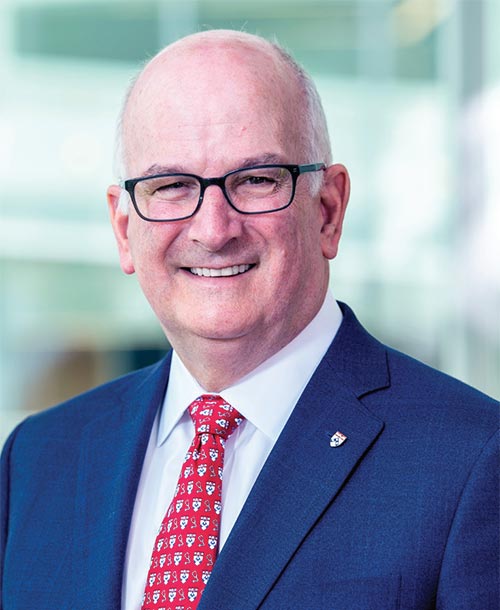
Kevin Mahoney
"I'm hoping that an ongoing part of this pandemic will be that the american healthcare system is finally doing a better job of not just our physical health but also our behavioral health and taking care of each other."
Leaders, from President Joe Biden to Cara McNulty, president of Aetna Behavioral Health and Employee Assistance Program, and Kevin Mahoney, MBA '15, DBA '18, CEO of the University of Pennsylvania Health System, emphasize the importance of continued mental health support.
"I think America is tilting toward understanding that financial health and fiscal health are terrific, but without mental health and mental security, without behavioral health systems, it's a pretty dire world out there," says Mahoney. "So I'm hoping that an ongoing part of this pandemic will be that the American healthcare system is finally doing a better job of not just our physical health but also our behavioral health and taking care of each other. I think that is just critical."
 In 2020 and 2021, there has been an emphasis on meeting patients where they are through appointments like telehealth or visiting an urgent care facility. Leaders of large and small healthcare systems are working together to apply retail principles to healthcare delivery. This trend will continue into 2022, and will likely define the future of healthcare in Philadelphia.
In 2020 and 2021, there has been an emphasis on meeting patients where they are through appointments like telehealth or visiting an urgent care facility. Leaders of large and small healthcare systems are working together to apply retail principles to healthcare delivery. This trend will continue into 2022, and will likely define the future of healthcare in Philadelphia.
One example of such innovation is the partnership between Mercy Catholic Medical Center-Mercy Philadelphia Campus, Penn Medicine, Children's Hospital of Philadelphia (CHOP) and Independence Blue Cross. For many decades, Mercy functioned as an anchor healthcare institution in West Philadelphia, providing essential services to its surrounding communities. For a lot of reasons, economic and otherwise, it could no longer survive as a free-standing hospital. Those three institutions, in addition to others, formed a coalition to ensure that the hospital campus would continue to connect community residents to essential health services.
"We are reimagining that historic hospital not as a hospital but as a 'healthy village,'" says Mahoney. "And that healthy village is going to have—in addition to the emergency room, in addition to behavioral health services provided by CHOP, in addition to a federally qualified health clinic—we are hopeful that it will also include affordable housing. We hope it will be where people are going to go for diabetic education. In the old days, somebody owned that hospital and they ran it as a hospital. Instead, compare [this] to a shopping mall or a virtual mall where several retail outlets [operate] under the same roof."
Listen to Kevin Mahoney's full interview on Catalyst, the podcast from the Fox School of Business.
Since the ancient Greeks developed markets to the dawn of the internet age and now into the metaverse, the retail industry has always been volatile. There is a constant need to innovate, reinvent and reimagine the future of one's business and the marketplace as a whole.
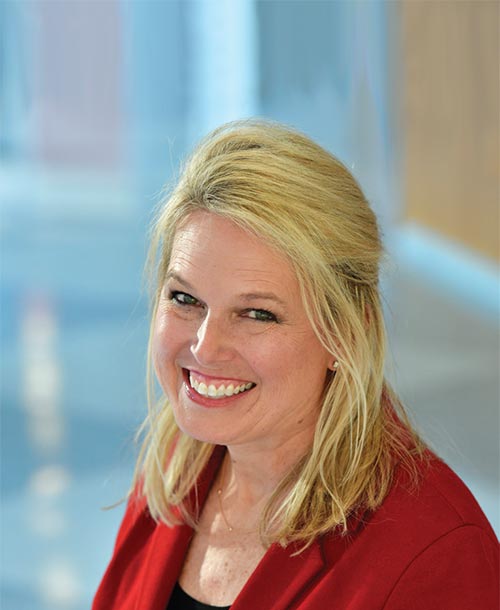
Sheri Lambert
"A trend that truly surprised me was the number of physical stores that opened in 2021 when everyone thought that brick and mortar was dying off."
Of course, 2021 was no exception, with many trends and changes spurred and exacerbated by the pandemic. Shopping options like omnichannel, with services that allow customers to purchase products online and pick them up in-store, exploded in popularity throughout the year. Social media commerce and its role in driving sales through influencers or buying and selling products via Instagram have also become the norm as well. Direct-to-consumer (DTC) businesses across all industries—companies like Warby Parker, Allbirds and BarkBox that sell directly to consumers and eliminate the go-between of third-party retailers or wholesalers—have also gained immense popularity.
 But there have been some surprising developments.
But there have been some surprising developments.
"A trend that truly surprised me was the number of Physical stores that opened in 2021 when everyone Thought that brick and mortar was dying off," says Sheri Lambert, assistant professor of marketing and supply chain and managing director of the Center for Executive Education.

Alison Wehr
"I'm always finding these golden nuggets we didn't know about our broadcast."
Alison Wehr, BBA '19, is a business analyst at QVC, an American television network and flagship shopping channel specializing in televised home shopping. In her role on the consumer insight and analytics team, Wehr focuses on viewership analytics.
"I am working in a really interesting area of retail,” says Wehr. “When most people think of the industry, they think of sales. We have that on-air sales aspect, yes, but I'm analyzing things like viewership metrics—for example, looking at a particular hour of the broadcast and seeing how households tune in and out, based on the items we have on air. I'm always finding these golden nuggets we didn't know about our broadcast."
While the nature of QVC's operations was not impacted by COVID-19 with phone and online sales, Wehr is proud of the fact that the network did not miss a day of providing products and services to customers, even in the early days of the pandemic.
Sales reflected the trends of the last two years—in 2020, cookware and home goods flew off the shelves. With warmer weather and the rollout of vaccinations in 2021, fashion sales experienced an uptick. So while Wehr posits that her team at QVC can expect to see some of those trends continuing, as we have all learned, no one can predict the future.
"Our plans could change based on anything that happens externally, so we are always mindful of What is happening—what their needs are and how they are feeling," says Wehr.


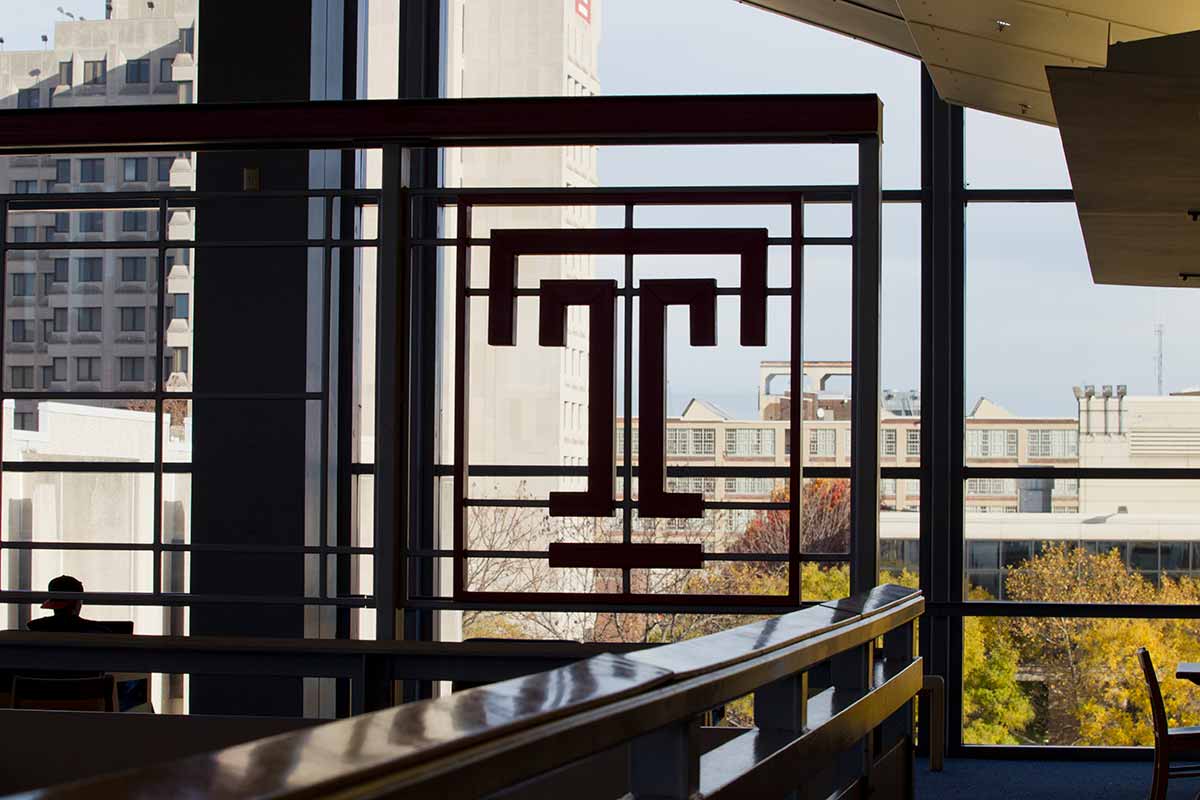
This issue gives us the opportunity to dream up a better future—hopefully a more unbiased, diverse, inclusive and equitable one. To help me envision the future of work and workplace culture, I interviewed Fox Associate Professor Leora Eisendstadt, Murray Shusterman Research Fellow and the director of the Fox School’s Center for Ethics, Diversity and Workplace Culture (CEDWC). Tiffany Sumner is the former director of communications at the Fox School and host of the Fox School podcast, Catalyst.
If you were to reimagine the workplace through the lens of diversity, equity and inclusion (DEI) best practices, what workplace culture challenges would you recommend that we address first?
Ironically, one of the primary workplace culture challenges I see is the lack of a clearly defined company culture. Lack of a clear culture or company ethos leaves employees feeling unmoored and allows discontent and toxicity to creep in. Changing company culture is extremely hard work and does not happen overnight. But culture change and definition has to come from the top and has to be reiterated over and over with all stakeholders. When senior leaders define their expectations and repeat them again and again, it trickles down and becomes part and parcel of what it means to be an employee.
But, of course, talk is cheap. The definition of company culture is hollow absent structural change. A company’s culture should be evident in all facets of the organization. The culture should be infused into hiring practices, employee/employer dynamics, stakeholder engagements, etc. When a company has a clear culture that is implemented by leaders across the organization, it becomes easier to navigate away from dynamics that are not in alignment with the company’s standards.
What steps would we take to get a world where bias is acknowledged and addressed?
I would start with something I often say in DEI trainings: Bias is not a dirty word. The first step to addressing bias is to acknowledge that it exists in all of us. And to say that someone has implicit or unconscious biases is not to say they are racist or sexist or a bad person. Implicit bias is a part of natural brain functioning and it is universal. At the same time, unacknowledged implicit biases can have harmful consequences. So the first step is to acknowledge the existence of bias in all of us. We all then need to learn to recognize when those biases may be impacting our decisions, actions and perceptions of those around us. We need to slow down our decision-making processes, work to pause our initial or “gut” reactions and put processes in place to check ourselves. The harm caused by implicit biases can be mitigated but only if it is acknowledged.
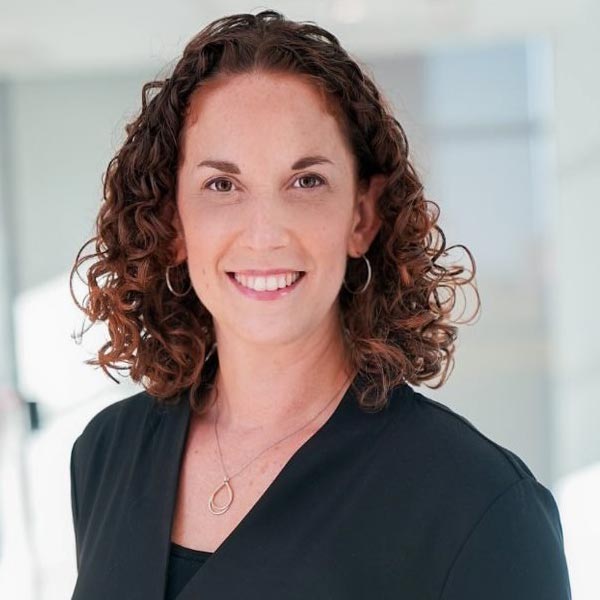
Leora Eisenstadt
How would hiring practices be improved?
Hiring practices can be improved by companies taking a more agile approach. This is especially true when looking to hire more diverse candidates. Hiring teams have to be willing to think outside the box to attract new talent that will diversify their organization and bring fresh perspectives. Hiring for diversity requires intentionality and oftentimes the willingness to look beyond the traditional platforms, tactics and skillsets when recruiting candidates. That might take additional time, but the payoff in the long run is worth it. Hiring practices can’t be a one-size-fits-all approach, and they need to coincide with the growth and culture objectives the company has set. And again, all individuals involved in the hiring process should be educated in the role of implicit biases, and organizations should build in checks to combat their power. For example, the use of discretionary hiring with no objective criteria or external checks can allow biases to dominate a decision even when made with the best of intentions. Creating structures that eliminate some of this subjectivity can go a long way to achieving a more diverse workforce.
How would we use current technologies (e.g., artificial intelligence, or AI) to hire in a more equitable way?
AI is both promising and troubling. While there is widespread excitement about the possibility of AI to combat implicit biases, the technology is only as effective as the data it is trained on. Unfortunately, AI can replicate existing biases in society but with the appearance of objectivity. At the same time, AI offers the ability to track widespread trends in a workforce, provide a neutral interface for workers who are having problems and many other possibilities. I am skeptical of the use of AI in hiring, particularly when it is used to filter out applicants or evaluate candidates based on facial screening and the like. But I remain open to new uses and to better trained AI systems.
How do these ideas influence your work at CEDWC?
At CEDWC, we are bringing together academics and executives who are working on these problems from different vantage points. These interactions can lead to better, more relevant research and to more effective educational tools and resources for our students. We are particularly focused on educating students about the importance of workplace culture and the role they will play in creating culture wherever they work. We aim to highlight the experiences of different kinds of workers to help students understand the diverse workforces they will be entering and perhaps managing.
What is CEDWC doing this year that you’d like to share with us?
We had a number of exciting programs this semester. On March 9, we hosted a program called Sexual Harassment in the Workplace: a Personal Story, in which Stephanie Vogt, a sexual harassment survivor and victim’s advocate, shared her personal experiences of harassment in the finance industry. On March 25, we cosponsored a summit for senior-level professionals with the Institute for Business and Information Technology and the Translational Research Center called The Digital Transformation of Workforce Development. During the event, our panelists discussed the ways in which the workforce and workplace culture has changed and the role of technology in achieving organizational goals in this area. Lastly, on April 1, we hosted Equality at Work 2022: Voices of Pride, an all-day conference on LGBTQIA+ issues in the workplace. The conference was inspired by three Fox undergraduate students and included three panels, a keynote address by Beth Brooke Marciniak (former EY global vice chair), and a concluding talk by Celena Morrison (executive director of the Mayor’s Office of LGBT Affairs in Philadelphia).
Next year, we will begin to focus on research and will sponsor a research symposium on ethics and employment law with the American Business Law Journal. We will also host several industry-academic working groups and begin to host regular lunches/discussion groups for CEDWC faculty fellows. Finally, we will work on creating a DEIthemed book club facilitated by undergraduate students with their peers in which CEDWC will provide students with the books and discussion materials and will offer stipends and training to the student facilitators. So we have a ton of great initiatives coming.
If you are doing any research related to this, we would love for you to share it!
My forthcoming paper in the University of Pennsylvania Journal of Business Law is called #MeTooBots and the AI Workplace and deals with some of these issues. It explores new AI-based technology which companies are using that purports to monitor all digital communications in an organization to detect and automatically report harassing or inappropriate material. In the paper, I critique the blind use of this kind of technology without consideration of the functional, legal, ethical and workplace culture implications. Rather than suggest abandoning AI in this area altogether, I propose smarter uses of AI-based technology to nudge employees, offer chatbots, and monitor and aggregate anonymous data. And I discuss the important but difficult work of workplace culture change that is essential to combating sexual harassment in the workplace.
In addition, I am working on a new project with Todd Haugh from Indiana University that considers the ineffectiveness of traditional legal approaches to combating implicit bias and proposes instead the use of nudges and boosts along with legal innovations that could incentivize the use of behavioral science. Finally, I am working on a project with Jeff Boles from the Fox School and Charlotte Alexander from Georgia State University in which we are studying the potential correlation between diversity in the C-suite and board of a company and sexual harassment lawsuits against it. This project is gathering data both on board diversity and on harassment litigation that should prove useful for numerous future projects.